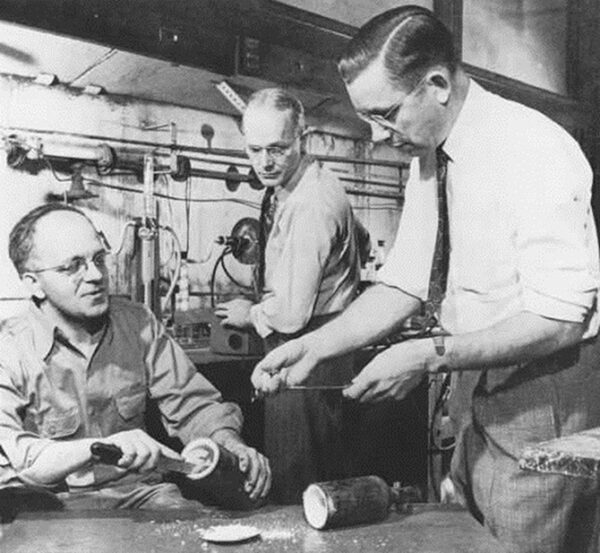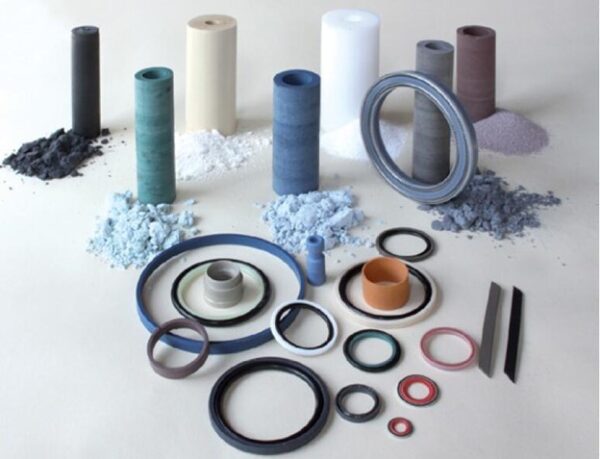The Impact of PTFE in Medical

Plastics such as PTFE flood the medical industry daily. Examining PTFE’s past and present guides us towards its sustainable future.
The medical industry utilizes plastics every second of each day, from catheters and medical packaging to medical devices. One such plastic is pertinent in today’s medical arena and has made an impact for decades. Polytetrafluoroethylene, commonly known as PTFE, is a polymer with a repeating unit structure derived from the monomer tetrafluoroethylene (TFE), a fluorocarbon compound. PTFE has plenty of benefits, such as chemical inertness and thermal stability. As with many synthetic compounds, PTFE has disadvantages as well. We should start from the historical beginning to understand PTFE’s values and dilemmas.
You can also read: Fluoropolymers Explained
PTFE’s Historical Past

Reenactment of the 1938 discovery of PTFE. Left to right: Jack Rebok, Robert McHarness, and Roy Plunkett. Image courtesy of Science History Institute.
Science’s history is filled with chance discoveries that impact our lives for years. PTFE is a prime example of this reality. PTFE’s beginnings go back to 1938, when Research Scientist Dr. Roy J. Plunkett stumbled upon PTFE in the E.I. du Pont de Nemours and Company laboratory, now known as DuPont. Dr. Plunkett discovered that TFE gas had polymerized into a solid, which he identified as PTFE. During the polymerization process, the double-bonded carbon atoms of TFE are broken, and the monomers link together in a long chain. This long polymer chain hit the market as Teflon. Since the trademarking of Teflon in 1945 by Kinetic Chemicals, a DuPont partnership with General Motors, the production of PTFE has skyrocketed. By the 1960s, PTFE applications had expanded significantly, with the medical industry using PTFE for implants and surgical tools due to its biocompatibility. PTFE’s revolutionary discovery in the 1930s and subsequent commercialization have advanced the compound from a novel polymer into a crucial material with many applications.
PTFE in The Medical Industry Today
It is evident that the medical industry relies on PTFE daily. Companies such as Solvay supply PTFE to the medical device industry, and companies like Boston Scientific use the raw material to manufacture pacemakers, stents, and scopes. Additionally, PTFE is used in surgical graft material, wound dressings, syringe filters, and catheter coating. It is used in medical devices like forceps and scalpels and medical analysis instruments such as mass spectrometers. Further, modern developments such as nano PTFE and ePTFE, increase PTFE’s performance by expanding upon its benefits. Benefits including nonreactivity, hydrophobicity, and insulation properties make PTFE a versatile option for many medical applications and specialties. With developments and benefits like these, it’s no surprise that PTFE has wide use and value in today’s medical industry. PTFE has come a long way since the days
of Dr. Plunkett. For now, PTFE is ready to evolve further, with improvements aimed at advancing its functionalities and increasing its sustainability.
PTFE’s Future in the Medical Industry

PTFE products and resins. Courtesy of Suko.
Enhanced patient outcomes through PTFE’s durability, biocompatibility, and versatility are of great benefit. With benefits come burdens and the dilemmas and setbacks of PTFE are no exception. PTFE is resistant to degradation, meaning recycling this polymer is difficult. Future developments may focus on creating methods for recycling PTFE and utilizing sustainable alternatives such as silicone, PHAs and PLA. Additionally, the use of toxic synthetic PFAS chemicals, PFOA, in the production of PTFE are of issue and have since been regulated. This regulation and the subsequent development of alternative production processes leads to newer and more refined products such as GenX. This new arrival has its share of issues as well, issues including toxicity, but may be a good start to a future of plastic products geared towards sustainability. PTFE’s place in the medical industry of tomorrow remains stagnant and uncertain. As advancements in polymer science and the legislation and regulation of PTFE continue, the medical industry will be required to stay current.
